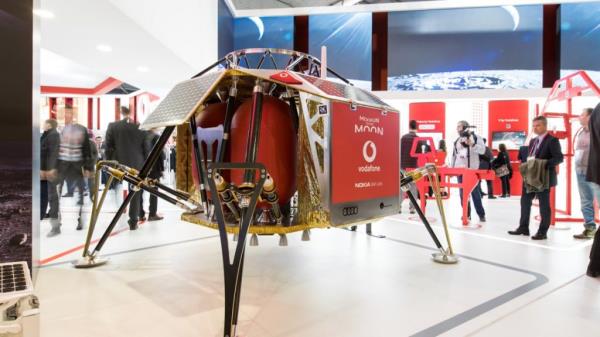05 March 2018
Vodafone’s 4G lunar base station as displayed at MWC 2018 held in Barcelona last week.
Vodafone plans to create the first 4G network on the Moon.
Berlin-based PTScientists is working with the mobile operator’s German division and car-maker Audi to achieve the first privately-funded lunar landing next year.
In collaboration with Nokia, Vodafone will create a network that will connect two Audi-designed lunar rovers to a base station in the Autonomous Landing and Navigation Module.
Bell Labs – the pioneering R&D division that Nokia acquired after its takeover of Alcatel-Lucent in 2015 – will create a space-grade ‘Ultra Compact Network’ that will weigh less than one kilo, the same as a bag of sugar.
The 4G network will enable the lunar vehicles to communicate and transfer scientific data and HD video while they carefully approach and study NASA’s Apollo 17 lunar roving vehicle that was used by the last astronauts to walk on the Moon in December 1972.
Vodafone testing indicates that the base station should be able to broadcast 4G using 1800MHz spectrum and send back the first ever live HD video feed of the Moon’s surface.
This will be broadcast to a global audience via a deep space link that interconnects with the PTScientists server in the Mission Control Centre in Berlin.
PTScientists CEO and founder Robert Böhme says: “This is a crucial first step for sustainable exploration of the solar system. In order for humanity to leave the cradle of Earth, we need to develop infrastructures beyond our home planet.
“The great thing about this LTE solution is that it saves so much power, and the less energy we use sending data, the more we have to do science.”
The Mission to Moon is due to launch in 2019 from Cape Canaveral on a SpaceX Falcon 9 rocket in 2019.










